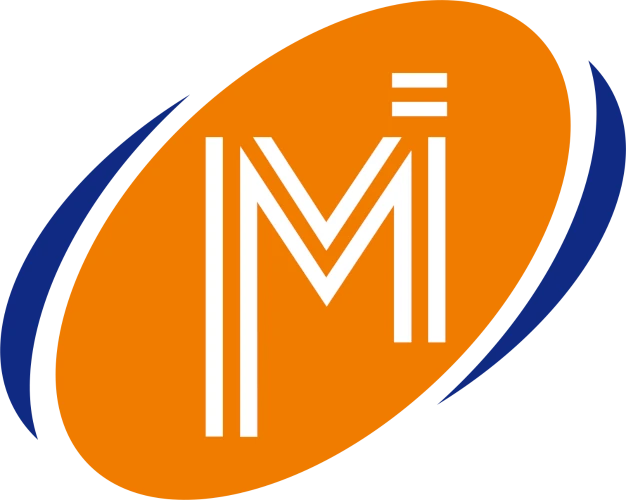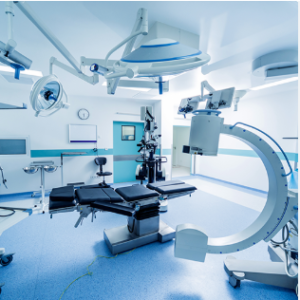The medical field has always been at the forefront of innovation, consistently evolving to improve patient outcomes and enhance the efficiency of healthcare professionals. Modern medical technology has significantly transformed the way doctors diagnose, treat, and monitor patients. From innovative medical tools to cutting-edge diagnostic equipment, the advancements in this sector are truly remarkable. In this blog, we’ll explore the latest trends in modern medical equipment technology and their impact on the healthcare industry.

1. Artificial Intelligence (AI) in Medical Equipment
AI is reshaping the healthcare landscape by empowering doctors with intelligent tools for accurate diagnostics and predictive analysis.
AI-Powered Diagnostics: Advanced imaging systems, such as AI-enabled MRI and CT scanners, can detect abnormalities with remarkable precision, aiding in early disease detection.
Personalized Treatment Plans: AI algorithms analyse patient data to create tailored treatment strategies, improving outcomes and reducing trial-and-error approaches.
AI has also enabled smart surgical robots that assist doctors in performing complex procedures with greater accuracy and reduced recovery times.
2. Wearable Medical Devices
Wearable technology is revolutionizing patient monitoring by offering continuous health tracking outside the clinical environment.
Real-Time Monitoring: Devices such as smartwatches and biosensors track vital signs, glucose levels, and cardiac activity, providing doctors with critical insights into patient health.
Preventive Healthcare: Wearables empower patients to take a proactive approach to health, reducing hospital visits and enabling early intervention.
With the integration of IoT (Internet of Things), these devices can seamlessly transmit data to healthcare providers, ensuring timely responses to potential issues.
3. Telemedicine and Remote Diagnostic Tools
Telemedicine has become a cornerstone of modern healthcare, especially in the wake of the COVID-19 pandemic.
Virtual Consultations: Doctors can now conduct video consultations, diagnose conditions, and prescribe treatments remotely, saving time and resources.
Portable Diagnostic Tools: Devices like handheld ultrasound scanners and portable ECG machines enable remote diagnostics, even in underserved regions.
The synergy between telemedicine and advanced diagnostic equipment has bridged the gap between doctors and patients, regardless of location.
4. Robotic-Assisted Surgeries
Robotic surgery systems like the da Vinci Surgical System are at the cutting edge of modern medical technology.
Precision and Control: These systems provide surgeons with enhanced dexterity and precision, reducing the risks associated with traditional surgeries.
Minimally Invasive Procedures: Smaller incisions lead to quicker recovery times, less pain, and reduced hospital stays for patients.
As technology advances, robotic-assisted surgeries are becoming more accessible and versatile, covering a wide range of medical specialities.
5. 3D Printing in Medical Applications
3D printing is transforming the production of medical equipment and prosthetics.
Custom Implants and Prosthetics: Doctors can now create personalised implants that fit perfectly, enhancing patient comfort and treatment success rates.
Surgical Planning: 3D-printed models of organs allow surgeons to plan complex procedures more effectively, improving outcomes.
This technology is also being used to create biocompatible materials, including tissues and organs, paving the way for groundbreaking developments in regenerative medicine.
6. Advanced Imaging Technologies
The evolution of imaging systems has enabled doctors to see the human body with unprecedented clarity.
4D Imaging: Combining 3D imaging with real-time motion capture, 4D imaging is particularly useful in cardiology and obstetrics.
Molecular Imaging: This technology allows doctors to visualize molecular processes within the body, aiding in the early detection of diseases like cancer.
These innovations reduce the need for invasive diagnostic procedures, making them safer and more comfortable for patients.
7. Smart Hospital Systems
Modern medical technology is not limited to individual equipment; it extends to entire healthcare systems.
Integrated Health Records: Smart hospitals use AI and IoT to maintain seamless patient records, ensuring that doctors have access to comprehensive medical histories.
Automated Processes: Automation in inventory management, appointment scheduling, and laboratory workflows reduces administrative burdens, allowing doctors to focus on patient care.
These systems enhance the overall efficiency and safety of healthcare delivery.
8. Nanotechnology in Medicine
Nanotechnology is enabling a new era of precision medicine.
Targeted Drug Delivery: Nanoparticles can deliver drugs directly to affected cells, minimising side effects and improving treatment efficacy.
Advanced Diagnostics: Nanosensors can detect diseases at the molecular level, offering unparalleled accuracy in diagnostics.
This field holds immense promise for treating conditions like cancer and neurological disorders.
9. Virtual Reality (VR) and Augmented Reality (AR)
VR and AR are finding innovative applications in the medical field.
Medical Training: These technologies provide immersive simulations for surgical training, allowing doctors to practice complex procedures in a risk-free environment.
Patient Education: AR can help patients visualize their medical conditions and understand treatment plans better. Such tools are making healthcare more interactive and engaging for both doctors and patients.
10. Sustainable Medical Equipment
Sustainability is becoming a key focus in the healthcare industry.
Energy-Efficient Devices: Medical equipment manufacturers are designing energy-efficient machines to reduce environmental impact.
Reusable Materials: Advances in sterilization technology have enabled the safe reuse of medical instruments, reducing waste. Sustainable practices not only benefit the environment but also lower operational costs for healthcare providers.
Conclusion
Modern medical technology continues to push the boundaries of what is possible in healthcare. From AI and robotics to wearable devices and nanotechnology, these innovations are empowering doctors to deliver better care while improving patient experiences. As the industry evolves, staying informed about these trends is crucial for healthcare professionals.
Frequently Asked Questions
1. What is the role of AI in modern medical technology?
AI enhances diagnostics, creates personalized treatment plans, and powers robotic-assisted surgeries, improving accuracy and patient outcomes.
2. How do wearable medical devices benefit patients?
Wearables offer real-time health monitoring and promote preventive care, allowing doctors to address potential issues before they become serious.




